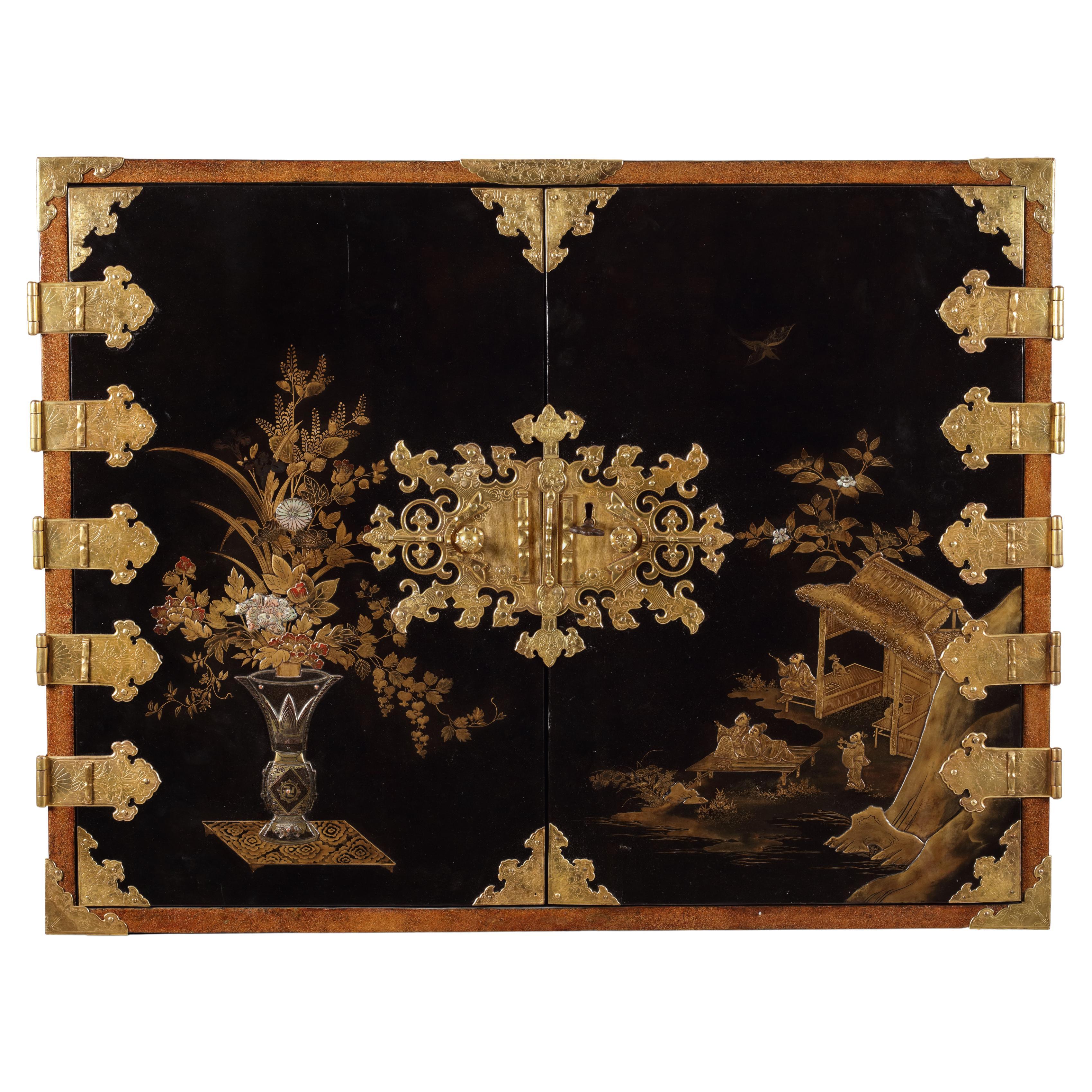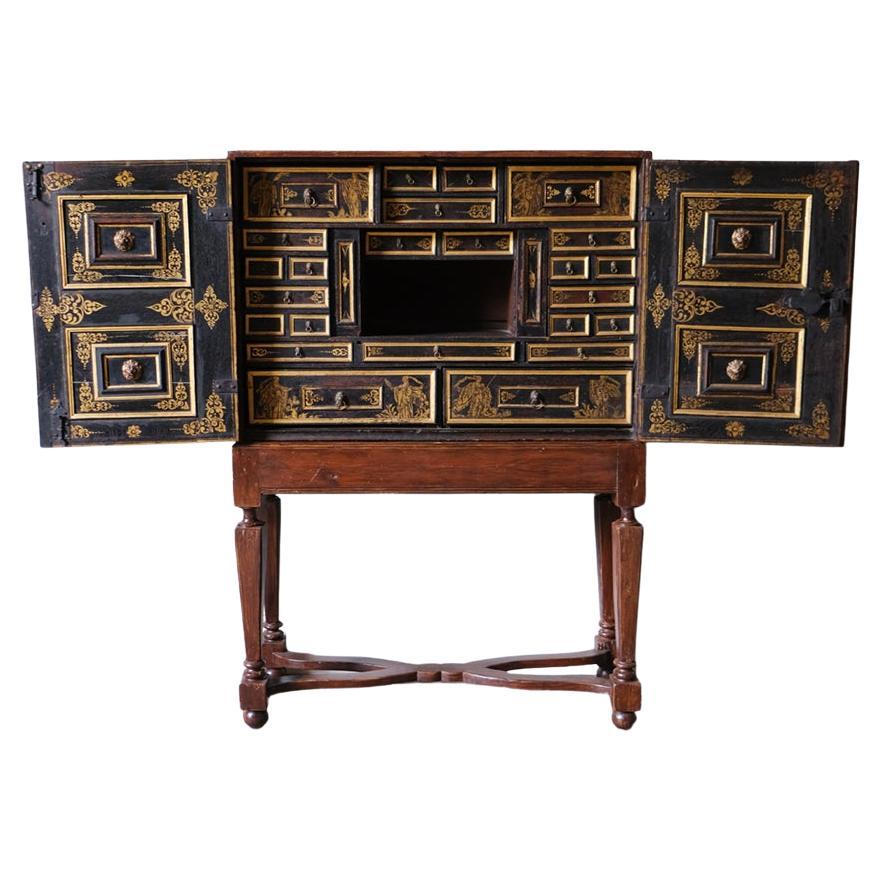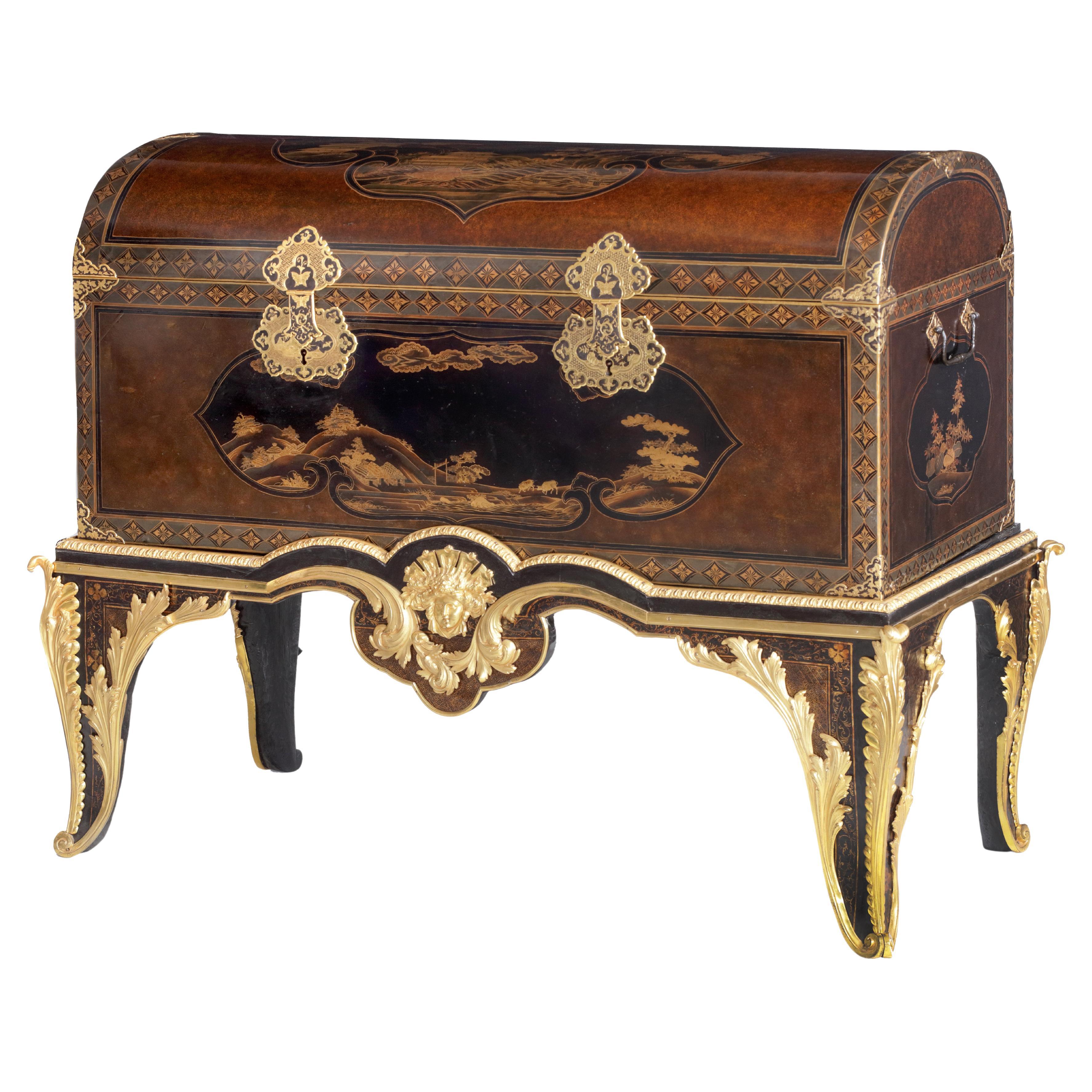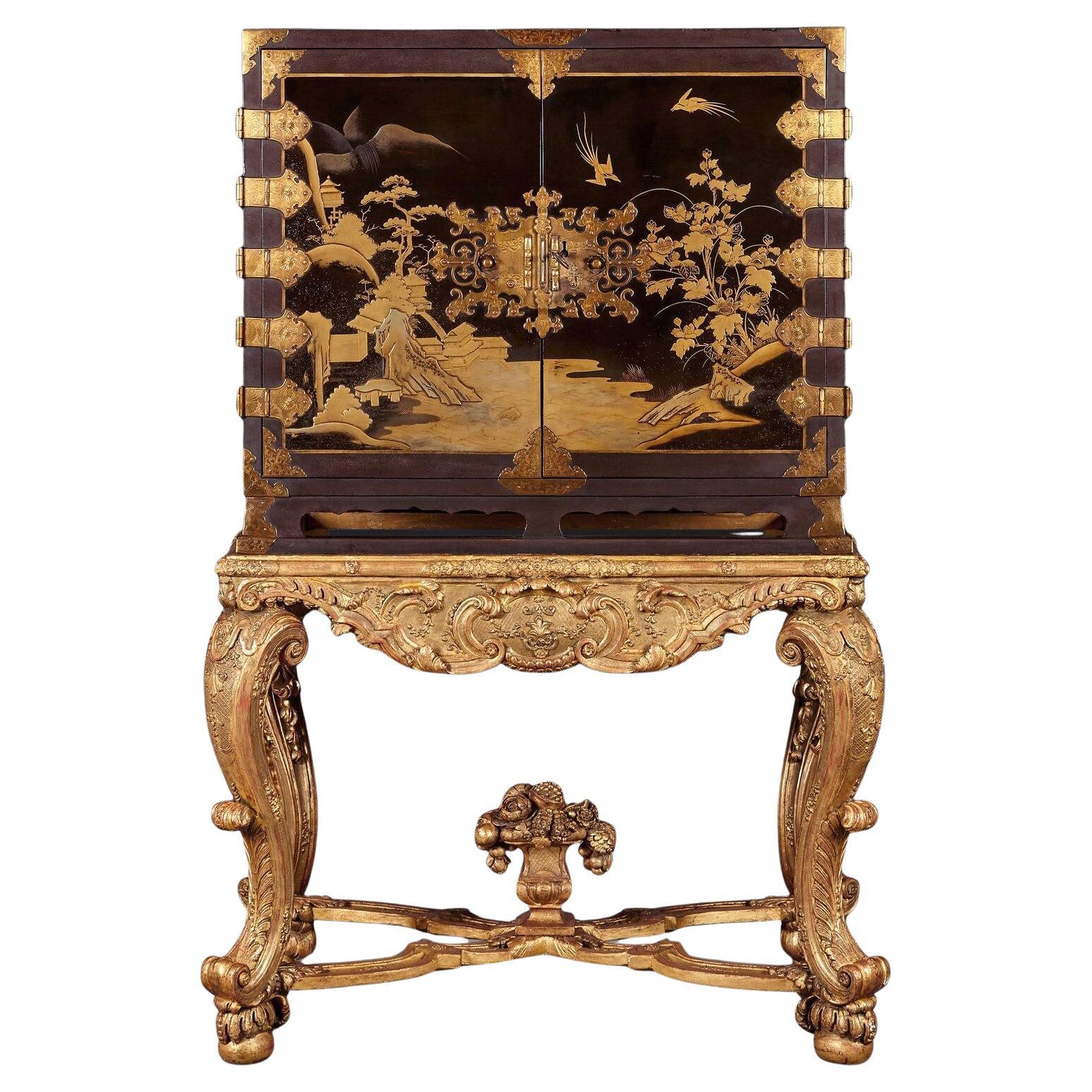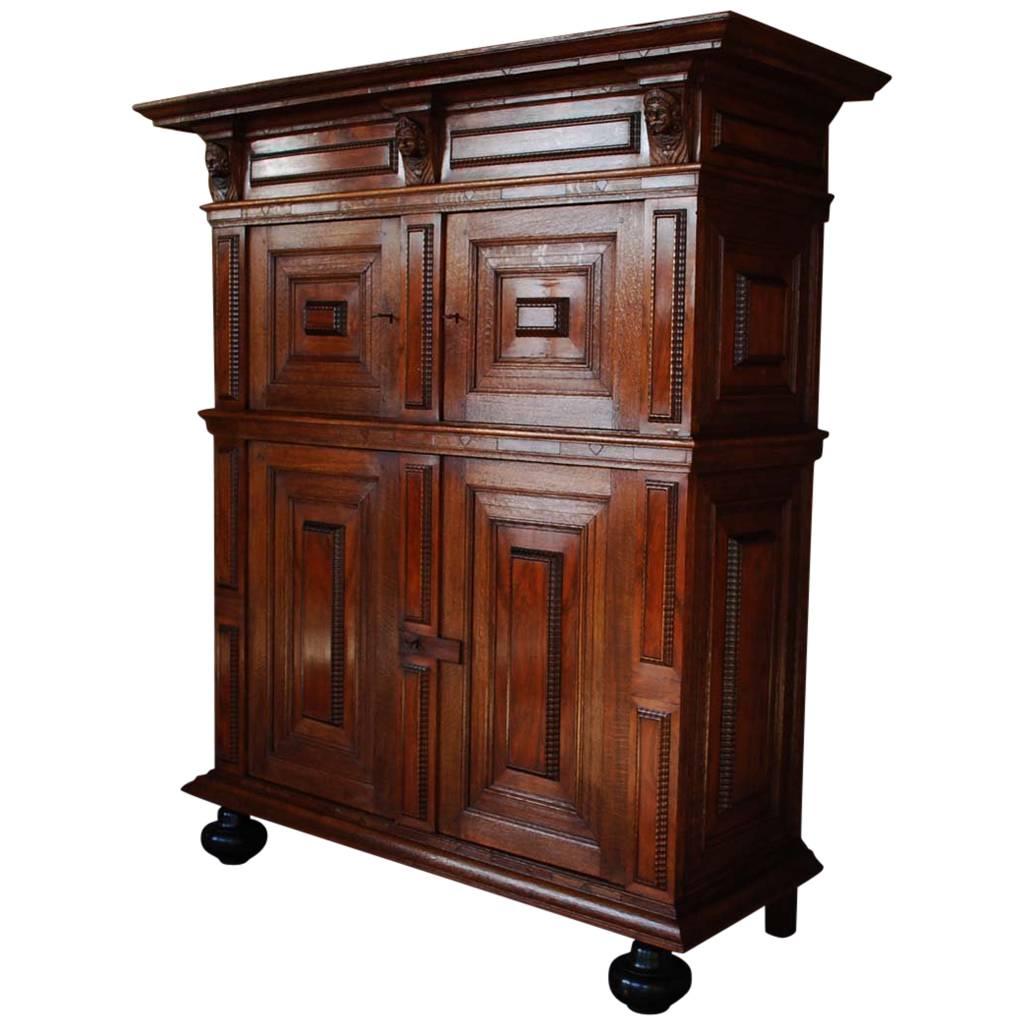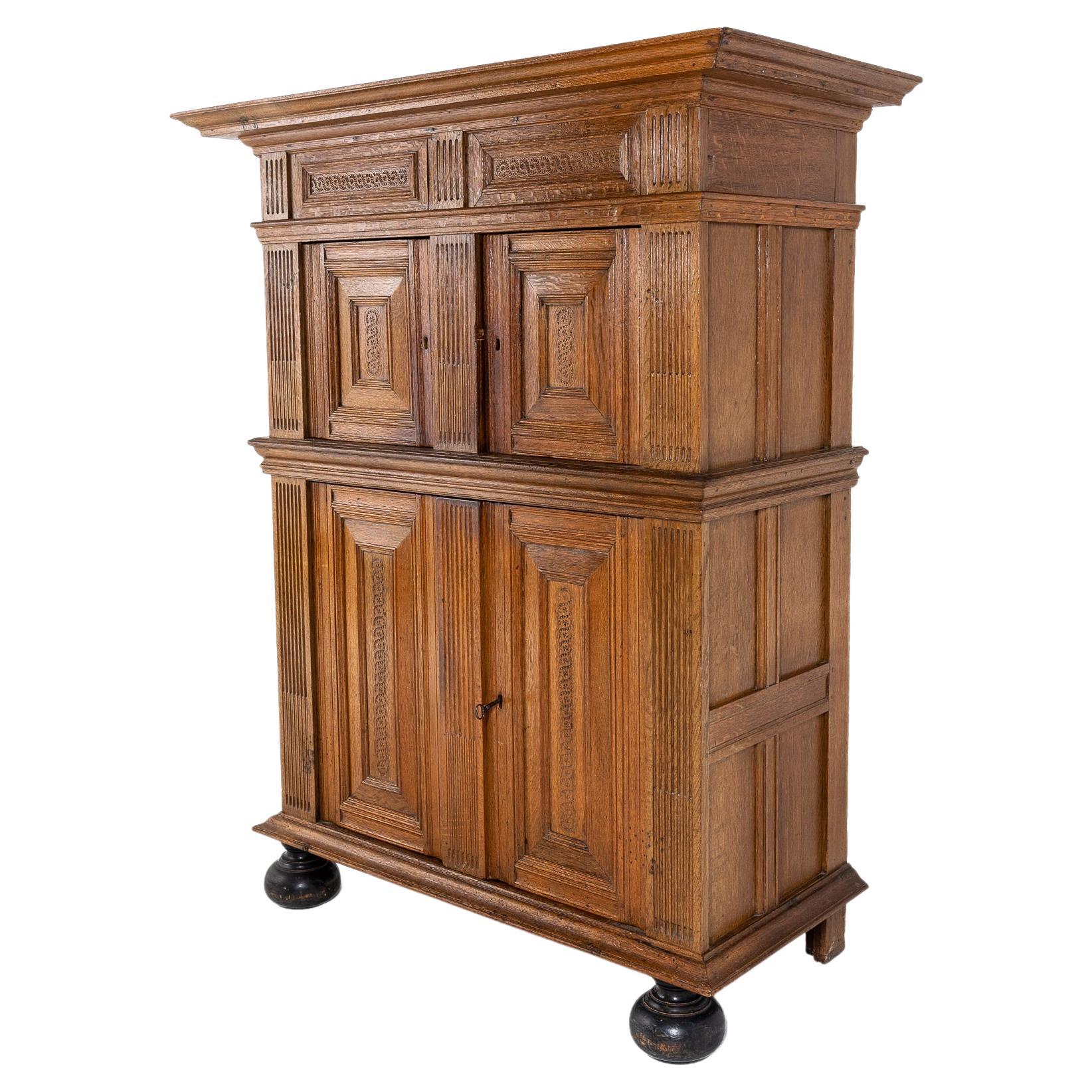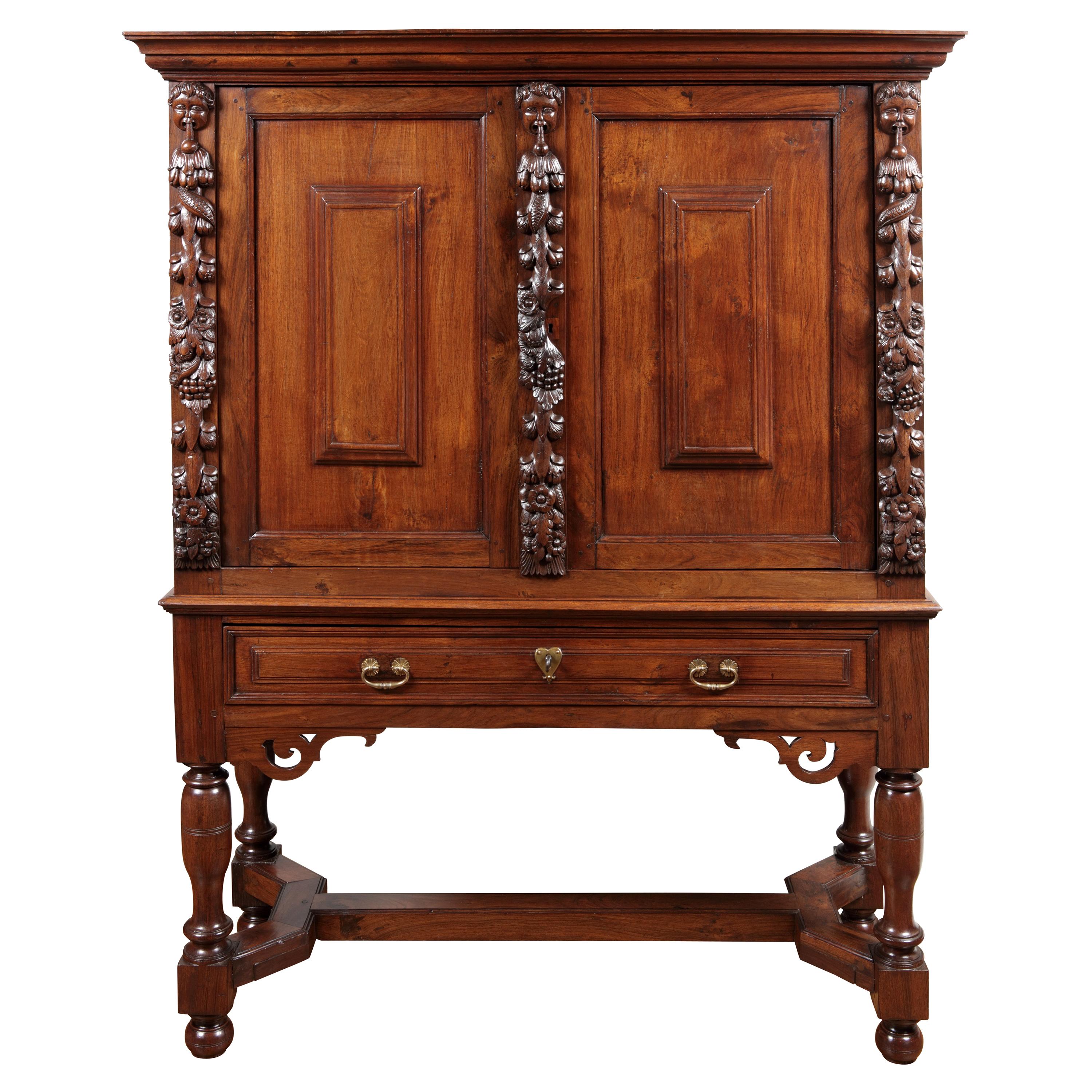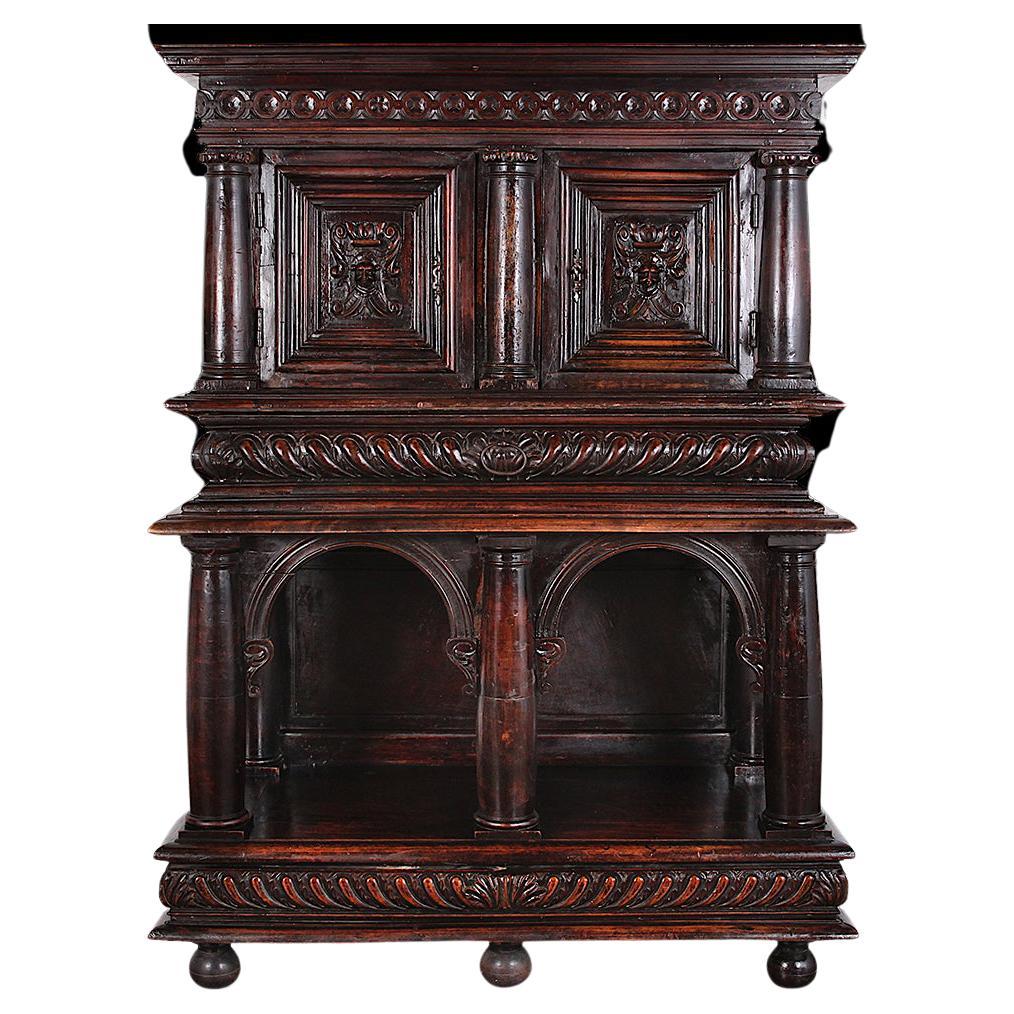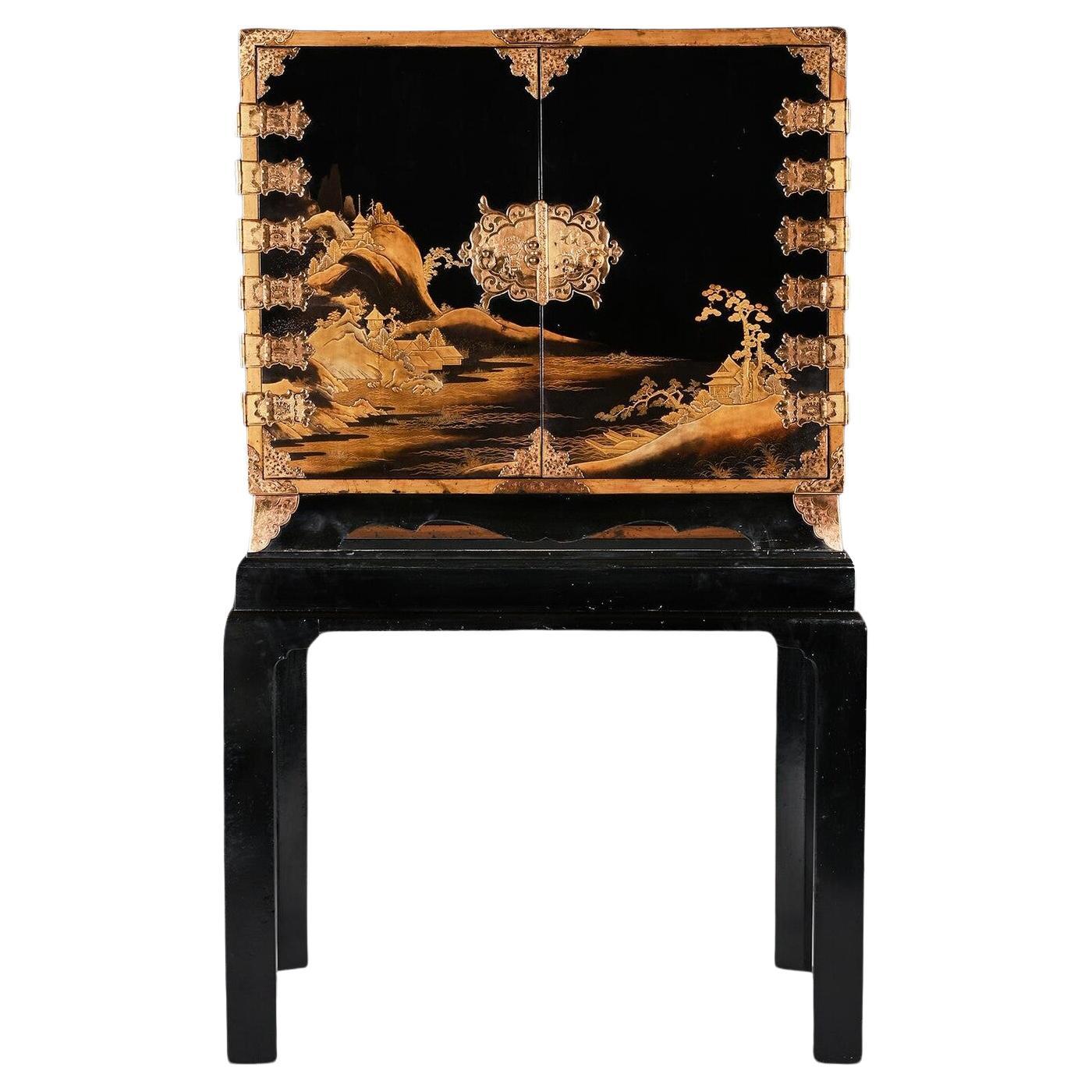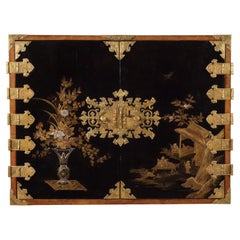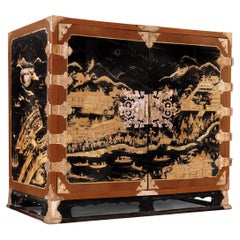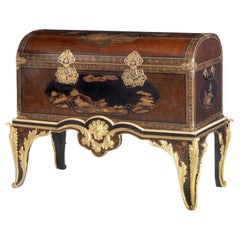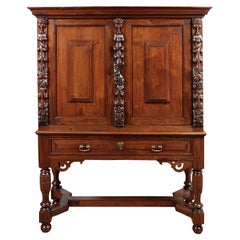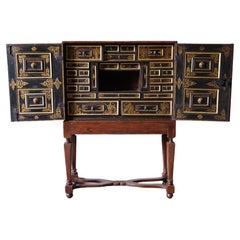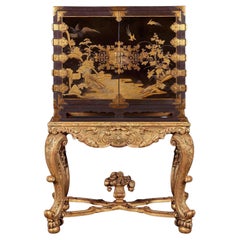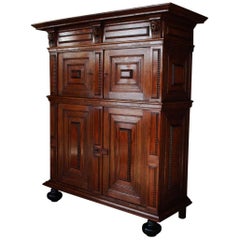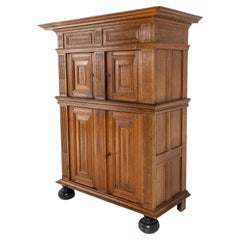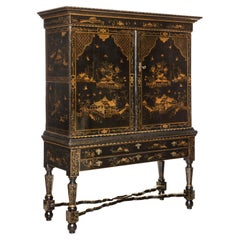
Exceptional Dutch Lacquered Chinoiserie Cabinet on Stand, 17th Century
View Similar Items
Want more images or videos?
Request additional images or videos from the seller
1 of 7
Exceptional Dutch Lacquered Chinoiserie Cabinet on Stand, 17th Century
About the Item
- Dimensions:Height: 75.79 in (192.5 cm)Width: 55.12 in (140 cm)Depth: 23.23 in (59 cm)
- Style:Chinoiserie (Of the Period)
- Materials and Techniques:
- Place of Origin:
- Period:Late 17th Century
- Date of Manufacture:1680-1700
- Condition:Wear consistent with age and use. Cabinet in rare original condition, only cleaned.
- Seller Location:Amsterdam, NL
- Reference Number:1stDibs: LU5458226431412
About the Seller
5.0
Recognized Seller
These prestigious sellers are industry leaders and represent the highest echelon for item quality and design.
Established in 1985
1stDibs seller since 2020
23 sales on 1stDibs
Authenticity Guarantee
In the unlikely event there’s an issue with an item’s authenticity, contact us within 1 year for a full refund. DetailsMoney-Back Guarantee
If your item is not as described, is damaged in transit, or does not arrive, contact us within 7 days for a full refund. Details24-Hour Cancellation
You have a 24-hour grace period in which to reconsider your purchase, with no questions asked.Vetted Professional Sellers
Our world-class sellers must adhere to strict standards for service and quality, maintaining the integrity of our listings.Price-Match Guarantee
If you find that a seller listed the same item for a lower price elsewhere, we’ll match it.Trusted Global Delivery
Our best-in-class carrier network provides specialized shipping options worldwide, including custom delivery.More From This Seller
View AllExtremely Fine and Rare 17th-Century Japanese Export Lacquer and Inlaid Cabinet
Located in Amsterdam, NL
An extremely fine and important Japanese lacquer cabinet with gilt-copper mounts for the European market
Edo period, late 17th century
The pictorial style decorated rectangular...
Category
Antique Late 17th Century Japanese Lacquer
Materials
Brass
Price Upon Request
Free Shipping
17th Century Japanese Export Lacquer Cabinet with Depiction the Dutch Tradepost
Located in Amsterdam, NL
A highly important Japanese export lacquer cabinet with depiction of the Dutch East India Company tradepost Deshima and the annual Dutch delegation on its way to the Shogun in Edo
Edo period, circa 1660-1680
H. 88 x W. 100.5 x D. 54 cm
This cabinet includes a later European japanned stand, but also a modern powder-coated steel frame.
The latter can be designed and added to your specific needs.
The sides and front of the rectangular two-door cabinet are embellished in gold and silver hiramaki-e and takamaki-e on a black roiro lacquer ground with a continuous design. The two doors depict a long procession of numerous figures travelling on foot and horseback along buildings and a pagoda into a mountainous landscape. This is the annual court journey, Hofreis, of the Dutch from Nagasaki to the Shogun’s court in Edo. Three horseback riders are dressed as Dutch merchants and a fourth figure, probably het Opperhoofd, is seen inside a palanquin, norimon. Just about to cross the bridge, two men are carrying a cabinet like the present one.
Many Japanese figures on either side of the procession are engaged in various activities; some play musical instruments on board of small boats, others are fishing; figures inside buildings are depicted playing go, and farmers are tending to their rice paddocks. The upper part of the right door shows a large mansion, probably the local daimyo’s castle, with men kneeling before a man in the central courtyard.
The court journey fits in with the foreign policy of the shogunate which accorded a role to the VOC alongside China, Korea, and the Ryukyu Islands who also had to pay tribute. However, the VOC employees were traders, having low status in Japan’s social hierarchy, and they were received with less deference than were the state embassies from Korea and the Ryukyu Islands. Nevertheless, the contacts with the Dutch were a welcome source of information to the Shogun about Europe and European science and technology.
The left side of the cabinet depicts, in mirror image, a rare view of the artificial fan-shaped Deshima Island, the trading post for the Dutch in Japan. The island, where the Dutch flag flies, is surrounded by small Japanese boats and an anchored three-masted fluyt (cargo ship), flying Dutch flags, with on the stern the VOC monogram. On the bottom right a busy street of Nagasaki is shown, bordered by shops and leading up to the stone bridge. On the island the trees are beautifully painted, two cows can be seen, and the flagpole, all in very fine detail. Dutchmen and enslaved Malay are visible outside the buildings and two Japanese figures, probably guards, sit in a small hut in the centre.
A maximum of fifteen to twenty Dutchmen lived on the island at any time and soldiers or women were not allowed. Restrictions on Deshima were tight, and the merchants were only allowed to leave the island by special permission. The Opperhoofd had to be replaced every year, and each new Opperhoofd had to make a court journey to pay tribute, present gifts, and to obtain permission to Margaret Barclay eep on trading. In the distance, many birds fly above the hills and a four-story pagoda can be seen. The right side of the cabinet is painted with other horse riders and their retinue journeying through mountains.
The pair of doors to the front open to reveal ten rectangular drawers. The drawers are decorated with scenes of birds in flight and landscapes with trees and plants. The reverse of the left door with two thatched buildings, one with a ladder, underneath a camelia tree with large blooms; the right door with a three-story pagoda nestled among trees and both doors with a flying phoenix, ho-oo bird. The cabinet, with elaborately engraved gilt copper mounts, hinges, lock plates and brass handles, is raised on an 18th-century English japanned wood stand.
A pair of large cabinets...
Category
Antique 17th Century Japanese Edo Lacquer
Materials
Copper, Gold
$1,454,317
Free Shipping
17th-Century Japanese Namban Lacquer Coffer on French Stand, Possibly by Boulle
By André-Charles Boulle
Located in Amsterdam, NL
An impressive and large Japanese 'Namban' transition-style lacquer coffer with fine gilt copper mounts on a French Re´gence base, possibly by André-Charles Boulle (1642-1732)
Kyoto, 1640-1650, the base 18th century
?The coffer with shaped cartouches on a nashiji ground on the lid, front and sides, with fine decorations in various techniques: takimaki-e (high relief), tsuke-gaki (drawing with narrow lacquer lines and over sprinkling with gold and silver), usuniku-takamei-e (demi relief), kimekomi (pushed inside) and accents of kirigane (small geometrical metal mosaics). Inside the cartouche on the lid a landscape with volcanos...
Category
Antique 17th Century Japanese Lacquer
Materials
Brass, Ormolu
17th Century Dutch-Colonial Indonesian Sono Keeling Foliate Cabinet on Stand
Located in Amsterdam, NL
An Indonesian Sono keeling or Javanese rosewood foliate cabinet on stand or Rankenkast
Jakarta (Batavia), late 17th century
Measures: H 173 x W 133 x D 51 cm
The front of this cabinet is decorated with three carved swags of fruits and flowers coming out of cherub’s heads, a long drawer under two doors and two shelves behind the doors.
Usually, this type cabinet...
Category
Antique Late 17th Century Sri Lankan Dutch Colonial Cabinets
Materials
Rosewood
Rare Charming 17th Century Japanese Lacquer Cabinet with Gilt-Bronze Mounts
Located in Amsterdam, NL
A fine Japanese pictoral style lacquer cabinet with gilt-metal mounts
Kyoto, Edo period, 1670-1690
Decorated in Japanese relief lacquer work, black lacquer ground decorated...
Category
Antique Late 17th Century Japanese Furniture
Materials
Bronze
$43,530 Sale Price
25% Off
Free Shipping
Fine Japanese Namban Lacquer Jewelry Casket, 17th Century
Located in Amsterdam, NL
Japanese Namban lacquer transition-style coffer with two drawers
Kyoto/Nagasaki, circa 1650
The cartouches with gilt and red decorations of leaves...
Category
Antique 17th Century Japanese Edo Lacquer
Materials
Cypress
You May Also Like
Late-17th Century, Dutch Oak Cabinet on Stand
Located in London, GB
Dutch oak cabinet on stand
An exceptional late 17th-century Dutch oak cabinet-on-stand with an ornately carved interior, depicted in the Baroque man...
Category
Antique Late 17th Century Dutch Baroque Cabinets
Materials
Metal
17th Century Japanese Lacquer Cabinet On French Giltwood Regence Stand
Located in Benington, Herts
An Extremely Fine and Very Important 17th Century Japanese Lacquer Cabinet on French Giltwood Stand of Regence Period circa 1680-1690
Provenance
Likely acquired by Herman Willem ...
Category
Antique 17th Century Japanese Edo Cabinets
Materials
Giltwood, Lacquer
17th Century, Dutch Oakwood Cabinet
Located in Casteren, NL
Impressive Dutch Renaissance "kussenkast", four-door cabinet.
Solid oakwood with veneer.
large corniche with carved heads decor. Raised panelled doors and sides with ripple mouldings...
Category
Antique Late 17th Century Dutch Cabinets
Materials
Oak
$9,054 Sale Price
20% Off
17th Century Dutch Oak Cabinet
Located in Gloucestershire, GB
A 17th century Dutch oak cabinet of nice small proportions and finely balanced carvings to the moulded panel doors. Having a moulded cornice top abov...
Category
Antique 17th Century Cabinets
Materials
Oak
A Chinoiserie Cabinet on Stand, 19th Century
Located in ARMADALE, VIC
A Chinoiserie Cabinet on Stand, 19th Century
The two door 19th century cabinet with arching panels depicting a scene of pavilions and gilded willow trees surrounding a lake, mounted...
Category
Antique 19th Century European Chinoiserie Cabinets
Materials
Wood
French 17th Century and Later Cabinet on Stand
Located in Vancouver, British Columbia
An ornately-carved walnut 17th century and later French cabinet on stand, the top with a pair of carved doors and paneled carved sides with co...
Category
Antique 17th Century French Renaissance Cabinets
Materials
Walnut
Recently Viewed
View AllMore Ways To Browse
Nieuhof China
17th Century China Cabinet
Japanese Lacquer Cabinet On Stand
17th Century Japanned Cabinet
Japanned Cabinet 17th
Dutch China Cabinet
Dutch Cabinets 17th 18th Century
Chinese Export Cabinet On Stand
Chinoiserie Panels With Mother Of Pearl
Van Verre
Danish Hardware
Chinoiserie Painted Cabinet
Display Cabinet Iron
Mahogany Hand Carved Doors
Pull Out Tray
Vintage Joint Case
Beautiful Antique Chinese Cabinet
Cabinet Mother Of Pearl
